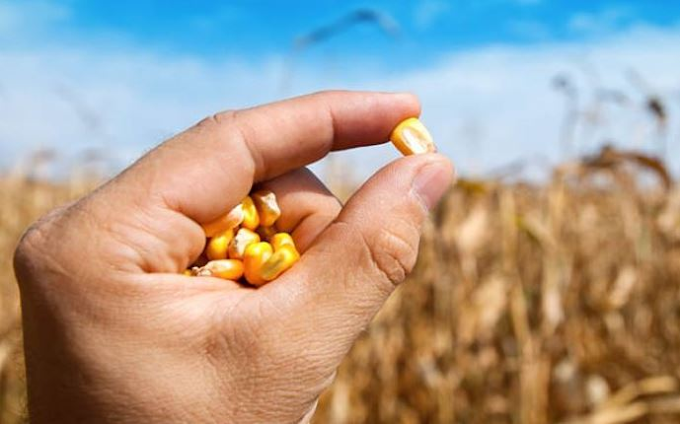Key Points of MS Swaminathan Commission report
MS
Swaminathan Recommendations
- Substantial
increase in public investment in agriculture related infrastructure
particularly in irrigation, drainage, land development, water
conservation, research development and road connectivity etc.
- The
Swaminathan Report at many places notes that enforcement of MSP throughout
the country is essential for imparting dynamism to agriculture.
- It
recommends this safety net to safeguard the interests of the crops, people
and regions which are likely to be affected in the process of
globalization.
- C2+50 % is the core of the reports of the National Commission on Farmers.
- The
Comprehensive cost (cost C2) includes imputed costs of family labour and
rent of owned land, as also the imputed interest on owned capital.
- The
National Commission on Farmers has recommended a 50 % margin over
C2.
- The
Swaminathan Commission had recognised the problem of cartelisation among
traders in a particular Agricultural Produce & Livestock Market
Committee (APMC) and thus recommended the establishment of One Nation-One
Market.
- The report
vouched for “development of domestic and international markets for local
produce, and move towards a Single Indian Market.”
- It
suggested simplification in the movement of goods by abolishing road tax
and local taxes and introduced a National Permit for plying commercial
vehicles anywhere in India.
- The report
recommends to distribute ceiling-surplus and waste lands;
- Prevent
diversion of prime agricultural land and forest to corporate sector for
non-agricultural purposes.
- Ensure
grazing rights and seasonal access to forests to tribals and pastoralists,
and access to common property resources.
- Establish a
National Land Use Advisory Service, which would have the capacity to link
land use decisions with ecological meteorological and marketing factors on
a location and season specific basis.
- Set up a
mechanism to regulate the sale of agricultural land, based on quantum of
land, nature of proposed use and category of buyer.
- A
comprehensive set of reforms to enable farmers to have sustained and
equitable access to water.
- Increase
water supply through rainwater harvesting and recharge of the aquifer
should become mandatory.
- "Million
Wells Recharge" programme,
specifically targeted at private wells should be launched.
- Substantial
increase in investment in irrigation sector under the 11th Five Year Plan
apportioned between large surface water systems; minor irrigation and new
schemes for groundwater recharge.
- Expand the
outreach of the formal credit system to reach the really poor and needy.
- Reduce rate
of interest for crop loans to 4 per cent simple,
with government support.
- Moratorium
on debt recovery, including loans from non-institutional sources, and
waiver of interest on loans in distress hotspots and during calamities,
till capability is restored.
- Establish
an Agriculture Risk Fund to provide relief to
farmers in the aftermath of successive natural calamities.
- Issue Kisan
Credit Cards to women farmers, with joint pattas as collateral.
- Develop an
integrated credit-cum-crop-livestock-human health insurance package.
- Expand crop
insurance cover to cover the entire country and all crops, with reduced
premiums and create a Rural Insurance
- Development
Fund to take up development work for spreading rural insurance.
- Promote
sustainable livelihoods for the poor by improving (i) Financial services
(ii) Infrastructure (iii) Investments in human development, agriculture
and business development services (including productivity enhancement,
local value addition, and alternate market linkages) and (iv)
Institutional development services (forming and strengthening producers'
organisations such as self-help groups and water user associations).
- Provide
affordable health insurance and revitalize primary healthcare centers.
- The National
Rural Health Mission should be extended to suicide hotspot locations on
priority basis.
- Set up
State level Farmers' Commission with representation of farmers for
ensuring dynamic government response to farmers' problems.
- Restructure
microfinance policies to serve as Livelihood Finance, i.e. credit coupled
with support services in the areas of technology, management and markets.
- Recommend
low risk and low cost technologies which can help to provide maximum
income to farmers because they cannot cope with the shock of crop failure,
particularly those associated with high cost technologies like Bt cotton.
- Need for
focused Market Intervention Schemes (MIS) in the case of
life-saving crops such as cumin in arid areas. Have
- Price
Stabilisation Fund in place to protect the
farmers from price fluctuations.
- Need swift
action on import duties to protect farmers from international price.
- Set up
Village Knowledge Centres (VKCs) or Gyan Chaupals in the farmers'
distress hotspots.
- These can
provide dynamic and demand driven information on all aspects of
agricultural and non-farm livelihoods and also serve as guidance centres.
- Public
awareness campaigns to make people identify early signs of suicidal
behavior.
- The
"net take home income" of farmers should be comparable to those
of civil servants.
- Improving
the functioning of the labour markets through such modification as may be
necessary without eroding the core labour standards.
- Encouraging
community-based breed conservation (i.e. conservation through use);







No comments:
Post a Comment